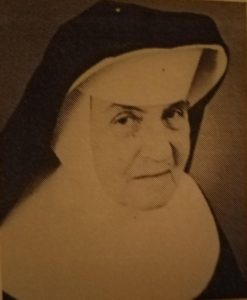
Sister Mary Elise Sisson
(1897- 1982)
It was often said that Sister Mary Elise Sisson didn’t know the meaning of the word impossible. Reared in upstate New York, she was born Lorraine Sisson, the musically talented daughter of John W. Sisson and Elizabeth Cochrane. She became an established singer in Europe and was scheduled to make her debut with the Metropolitan Opera Company when she decided to enter the convent instead. Upon joining the Sisters of the Blessed Sacrament, Lorraine set out to dedicate her life to uplifting the plight of people of color and Native Americans throughout the United States.
By 1934, Lorraine Sisson (known as Sister Mary Elise Sisson, S.B.S.) arrived on the campus of Xavier University of Louisiana and founded Xavier’s Music Department.
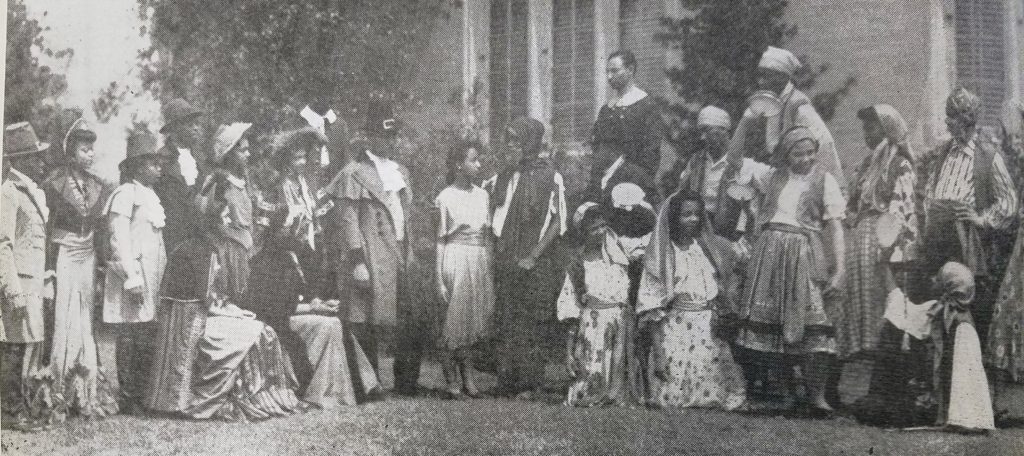
Mignon (1947)
Edwin Hogan (Laertes)-extreme left ; Susan Merriweather (Filina) ; Susan Foster (Frederick) ; Joseph Theard (Wilhelm)- center right ; Estelle Costello (Mignon); Thomas Fogie ( Lothario); Members of the choir.
It didn’t take long before she learned of the effects of segregation in the Deep South. Her music students were denied admission to the Municipal Auditorium and other local concert halls in the city. It was then that Sister Elise was determined to provide her music students with the experience on Xavier’s campus that they couldn’t get anywhere else.
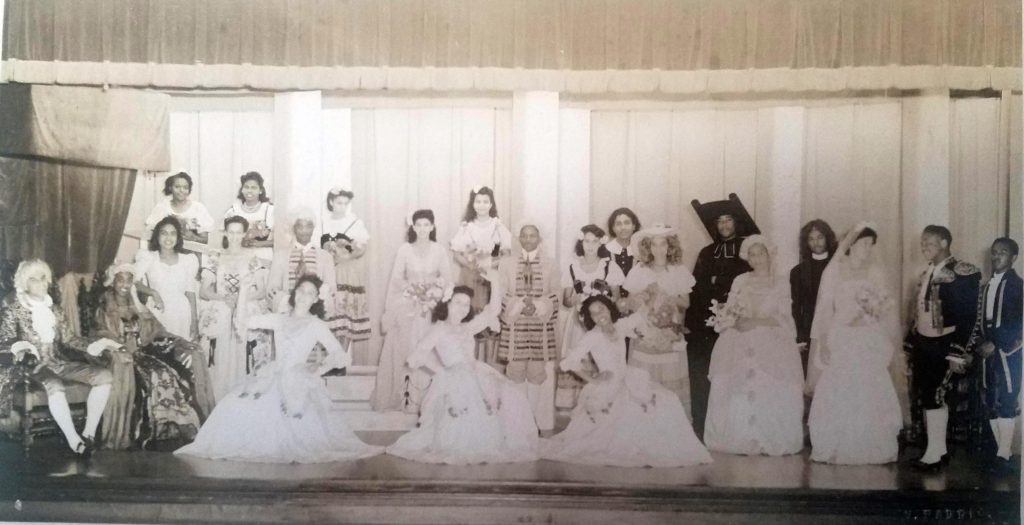
The Marriage of Figaro (1944)
For the next 35 years (1934-1969), Sister Mary Elise remained the chairman of Xavier’s Music Department and founder of its opera program. Under her direction, Xavier presented full-scaled opera productions. The performances were held in the gymnasium where art students built stages out of sections of basketball bleachers and repossessed planks. Many of the costumes were made by relatives and friends while the orchestra consisted of many band members.
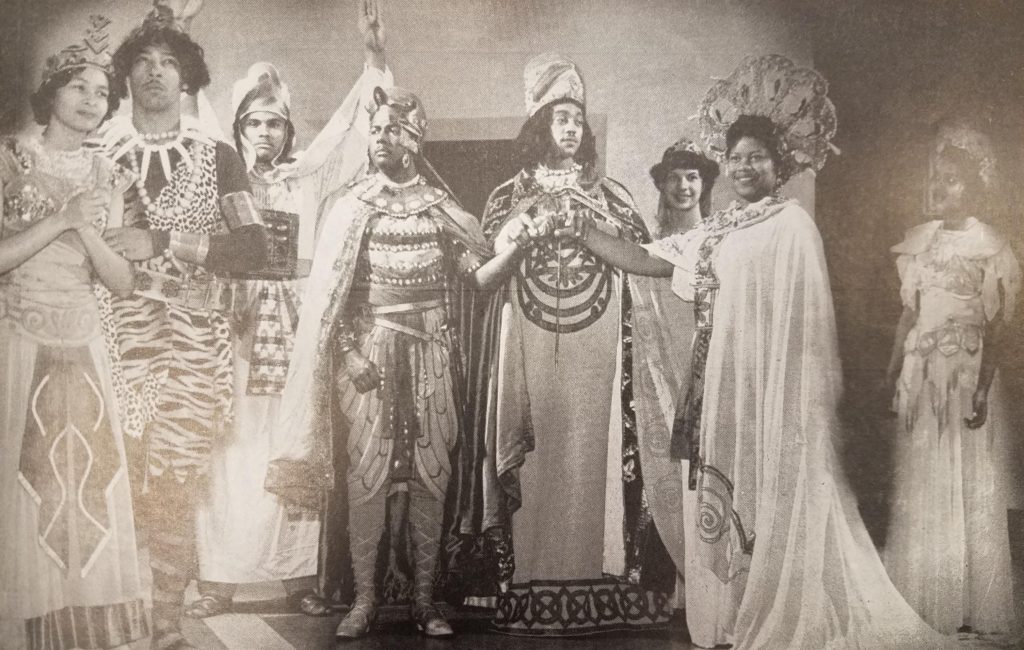
Aida (1950)
Emma Goldman (Aida), Alfred McEwen (Amonasto), Willie Brown (High Priest), Nelson Francis (Rhadames), Anderson Williams (The King), Bessie Johnson (Amneris), Barbara Gonzaque & Helen Martin (Maids).
During this period, Sister Mary Elise staged interracial productions for mixed audiences, something that was unheard of before that time. But, above all, she brought the world of opera to thousands of minority students who would not have had such an opportunity in the Deep South. As a result, many music educators were trained by her but, above all, many of her students have gone onto successful music careers in the United States and throughout Europe.

Debria Brown & Sister Elise
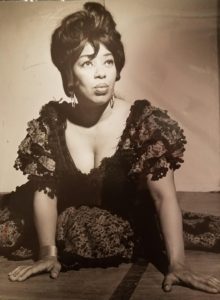
Debria Brown In “Carmen”
Debria Brown was one of Sister Elise’s students. She became an operatic mezzo-soprano and had an active international career that spanned five decades. She was part of the first generation of black opera singers to achieve wide success and part of a group of performers who helped break down barriers of racial prejudice in the opera world. Born in New Orleans in 1936 to Eunice and Rev. Bennett Brown, Debria graduated from Xavier in 1958 and made her professional opera debut that same year with the New York City Opera and at Carnegie Hall in the title role of “Carmen”. As Carmen, she received rave reviews everywhere she went. It was said, “She is Carmen, body and soul. She brings everything to it- voice, technique, appearance, temperament- everything.” She also studied with Katherine Dunham. From 1962-1965, Ms. Brown was a guest artist in various opera houses across Germany and Europe. She later became professor of voice and artist in residence at the University of Houston. She remained there until her death in 2001.
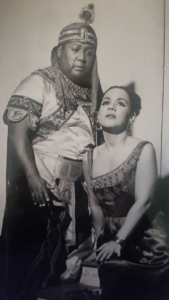
LaVergne Monette & Nelson Francis – Opera Gala “Aida” 1967
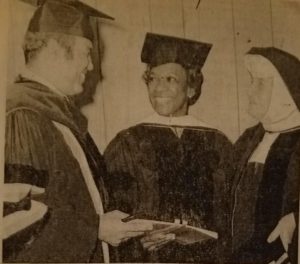
Dr. Norman Francis, president of Xavier University, chats with Mrs. Annabelle Bernard- Mercker (center) and Sister M. Elise, S.B.S. after he conferred honorary doctorate of music degrees on the former Xavier student and teacher.
Her retirement from Xavier in 1969 did not end the career she so loved. The 1970s saw the establishment of two black opera companies of which the primary mover was a white nun.
After relocating to Mississippi in 1969, Sister Elise founded Opera- South in the city of Jackson. The program encompassed three schools: Jackson State University, Utica State College and Tugaloo College. Opera- South became known as Mississippi’s first opera company for minorities.
Three years later in 1974 she founded National Opera Ebony in New York and Philadelphia. It became a showcase for black opera talent as well. Opportunities were offered not only to black singers and musicians, but also to stage directors, technicians and other opera personnel to become fully involved in operatic productions.
Over the years, many awards have been bestowed upon Sister Elise. She holds a unique place in the annals of 20th century musical development in the South. She often said she could think of many others who should be honored instead.
On Wednesday, 21 July 1982, at the age of eighty-five, Sister passed away at the Motherhouse of the Blessed Sacrament in Bensalem, Pennsylvania. Her remains are interred on the motherhouse grounds.
Source: Xavier University Archives & Special Collections (Music Department- Opera/ Sister Elise)
Lolita Villavasso Cherrie



This is great!! You have some pictures here that I did not find in Xavier’s archives.
Back in the Fall of 2016, I added a big dedication panel to Sister Elise in photo exhibit in the lobby of the Music Building.
I’ll send a photo of it.
Hi Givonna, I would love to have a photo of the dedication panel to Sister Elise ! If it can be scanned, just send it to Lolitac454@aol.com. I have another article to post on one of her talented students (Annabelle Bernard) within the next few days. Hope you enjoy it also. In all honesty, your work at Opera Creole continues the legacy of Sister Elise. She sought to bring the world of opera to her creole students just as you are bringing the world of creole composers to our community and beyond.
Lolita
Thank you so much!
Wow! What A story.
One remarkable woman, not unlike Mother Katherine Drexel, has made a permanent mark on New Orleans and the world!
Thank you. I attended The Junior School of Music that they started. It gave music majors an opportunity to teach us how to play piano and to have access to operas.
So happy to have this remembrance of Sr Elise. Having attended the jr. music school of music at Xavier and attended numerous events of music of several genre, I have a life long love and appreciation of opera , orchestral symphony, jazz, classical and so on to the latest style. I remember how frightened I was at recitals. My hands sweat on the keyboard. Sr. Allowed the college students to teach us. Thank you for reminding me of the gifts we received.
on the keyboard. Sr. Allowed the college students to teach us. Thank you for reminding me of the gifts we received.
I love all the historical information provide. In a country that has and continues to be ripped with division relating to ethnic group. It is wonderful information to pass on
all the historical information provide. In a country that has and continues to be ripped with division relating to ethnic group. It is wonderful information to pass on
It was a great surprise to see your information on Sister Mary Elise. I am preparing a book on Opera Ebony. I am in need of primary resource material and/or photos prior to Sister’s work as a co-founder of the company. I am the acting Board Chairman. Please, contact me for a continuing discussion. Wayne Sanders, the surviving co-founder still often speaks of Sister Elise with love and respect. We want the book to give Sister Elise the honor she well deserves.
The company still performs in the New York City Metropolitan area as well as internationally. Our most recent event was the Benjamin Matthews Vocal Competition. It celebrated the life of another co-founder who has passed on. Please visit us at http://www.operaebony.org.
So wonderful to see the work your organization is doing. Another way that demonstrates how good work branches out over time and space
Thank you so much for this article. I’m named for Sister Elise, my parents’ dear friend. She met me as a baby and I have letters from her but she died when I was 9. I’ve learned so much more bout her life!
Thank you so much for sharing the amazing history of Sister Mary Elise. She was my mentor when I was a student in the Music department, and I was the rehearsal pianist for the operas
that were performed and I worked with Debria Brown, LaVergne Monette, Nelson Francis and Emma Goldman to name a few of the singers who were performing in those productions.
I graduated in 1963 and received the MM in piano from the Yale School of Music in 1965.
Sister Elise was a trailblazer and she was fearless in her determination to see that her students couldreach the highest level of excellence. I will always remember her as a remarkable woman who dedicated her life to providing opportunities for African-American musicians.
It was wonderful to read the glorious history of Sister Mary Elise’s work as founder of the Xavier Music Department. She was one of my mentors as an undergraduate student from 1957 to 1963 and she appointed me as rehearsal pianist for the opera
productions. I also accompanied Debria Brown, Lavergne Monette and other singers in recitals and other music events for the Music department. Sister Elise gave me a solid foundation in the performing arts that has become an integral part of my life, and I will always remember her as a champion of the arts.
I know this might seem silly but I was wanting to know if you may have met my mother who attended Xavier as a music student (Opera). Her name was Linda Jeanette Jones. She would have attended somewhere between 1958 -1961
I don’t know how I missed this article. Thank you for the research done to publish it. My oldest daughter was named after Sister Elise. Xavier had a tremendous music program even for the very young. I remember going every Saturday morning for music theory and other topics when I was about 12 or younger. I took piano lessons from Sister Elise and she not only taught music, but took the opportunity of the lessons to get involved in your private life. It was an amazing experience.
Thank you. I would love to have a copy of Sister Elise and a photo of Laverne Monette (my former voice coach) sent to my email. My email is kevinajoseph@comcast.net. Thank you, cousin Jari.
In addition to the performance legacy of National Opera Ebony, the matter of the treasure trove of primary source material, in the form of original compositions and scores, must be brought to light. This organization made such an important contribution to the imagining of a pluralistic America through the arts and culture.